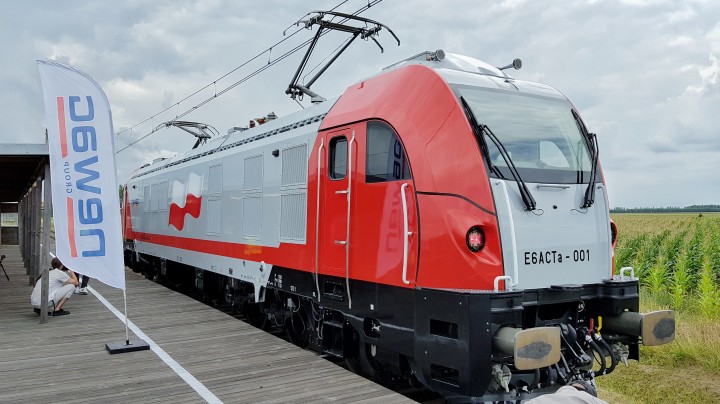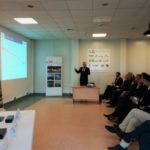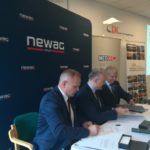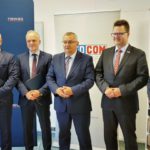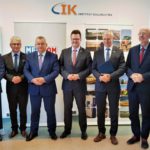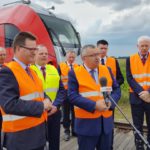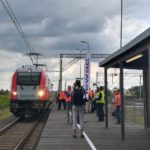News
DRAGON 2 Locomotive Presented at Żmigród
On July 12, 2018, a new DRAGON 2 locomotive, designed by NEWAG, was presented at Żmigród Test Track which belongs to Instytut Kolejnictwa [Railway Research Institute] in the presence of Andrzej Adamczyk, Minister for Infrastructure and Andrzej Bittel, Deputy Minister for Infrastructure.
“We are transforming the Polish railway industry. Today, we are presenting a new locomotive which is the result of work of Polish engineers. I am very happy that thanks to the achievements of our companies, Polish rail industry has arrived at 21st century. We care for both passenger transport and cargo transport. We have been implementing a project of extensive investment in Polish rail transport. Today’s event proves and we are moving in the right direction,” said Andrzej Adamczyk, Minister for Infrastructure.
“The new DRAGON 2 locomotive was designed and built by a Polish company NEWAG. I would like to congratulate Zbigniew Konieczek, NEWAG’s CEO, on the successful completion of this project. I am convinced that we will see Polish technical know-how and the works of Polish engineers on Polish railway tracks more often,” said Andrzej Bittel, Undersecretary at the Ministry of Infrastructure.
The locomotive presented is the first in Europe six-axle electric locomotive, fully compliant with Technical Specifications for Interoperability (TSI 2014), equipped with Level 2 ETCS. It was designed to pull heavy freight trains. The locomotive has converters based on silicon carbide (SiC) which guarantee defect-free operation in high temperatures, reduced noise levels, reduced energy losses by 50% and reduced size and weight of machinery by 60%.
“DRAGON 2 locomotives utilize cutting-edge, reliable technologies and ensure high work comfort for the driver. The main advantage of DRAGON 2 is a very high tractive force which, in combination with the loco’s big weight, effective anti-skid system and each axle drive enables the locomotive to pull heavy cargo trains. I hope that it will be useful for Polish transport,’ said Zbigniew Konieczek, CEO of NEWAG S.A.
***
NEWAG was founded in 1876. It is a leading manufacturer of electric and diesel passenger trains, electric and diesel locomotives and underground trains and trams. On May, 29, 2018, PKP Intercity signed a contract with NEWAG for purchase of twenty new electric locomotives. The contract gross value exceeds PLN 367 million.
The test track in Żmigród was opened in 1996 as the sixth out of eight test tracks currently existing worldwide. Since 2000, thus since the commercialisation and restructuring of PKP– Polish Railway Company and separating the Railway Scientific and Technical Centre (currently the Railway Research Institute) from the ownership structure of PKP and subordinating it directly to the minster competent for rail transport, it has been the property of the Institute.
“The test track in Żmigród which belongs to the Railway Research Institute is one out of eight such centres in the world and one of the six located in Europe. It is a very valuable asset. I am satisfied that the new locomotive manufactured by the Polish company is presented here,” said Andrzej Żurkowski, Manager of the Railway Research Institute.
“The Railway Research Institute is implementing elements of the Responsible Development Strategy, it cooperates with Narodowe Centrum Badań i Rozwoju [National Research and Development Centre], the railway industry, railway operators and infrastructure managers,” added Mr Żurkowski.
The test track in Żmigród is a unique research venue which makes it possible to run tests of new solutions at their preparatory stage. It is particularly useful both in testing railway infrastructure elements, including electrical power equipment, railway traffic management etc., and especially in testing rolling stock.
Diversified technical conditions which appear at the Polish railway network are recreated on the track, which makes it possible to run a variety of process tests in suitable conditions i.e., on the track which is not burdened with regular railway traffic but at the same time, fully reliable.


